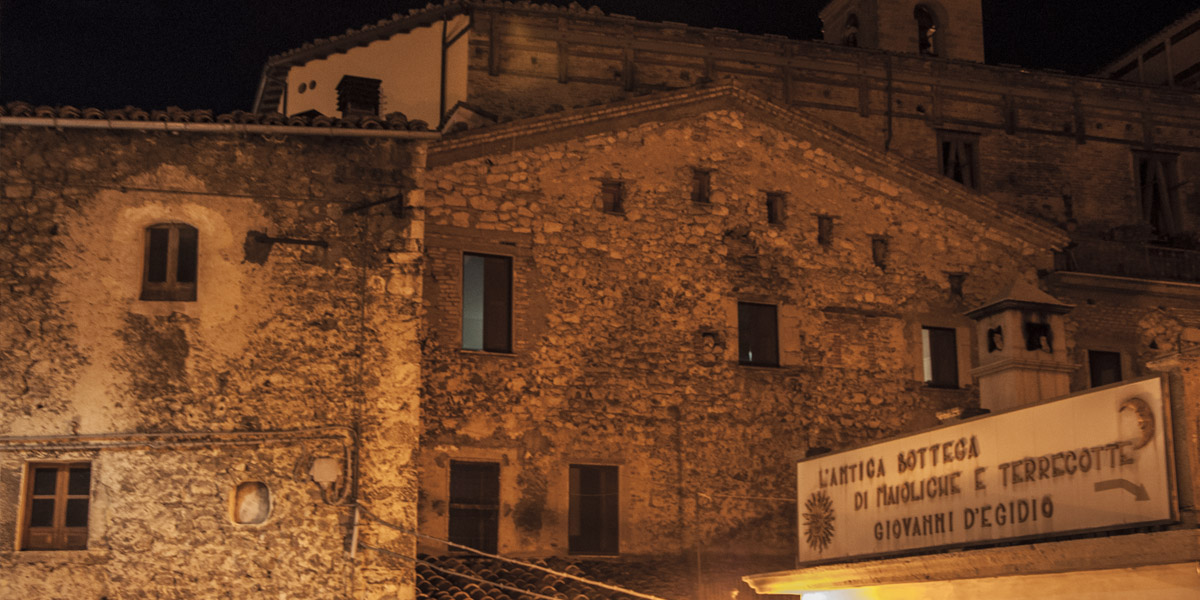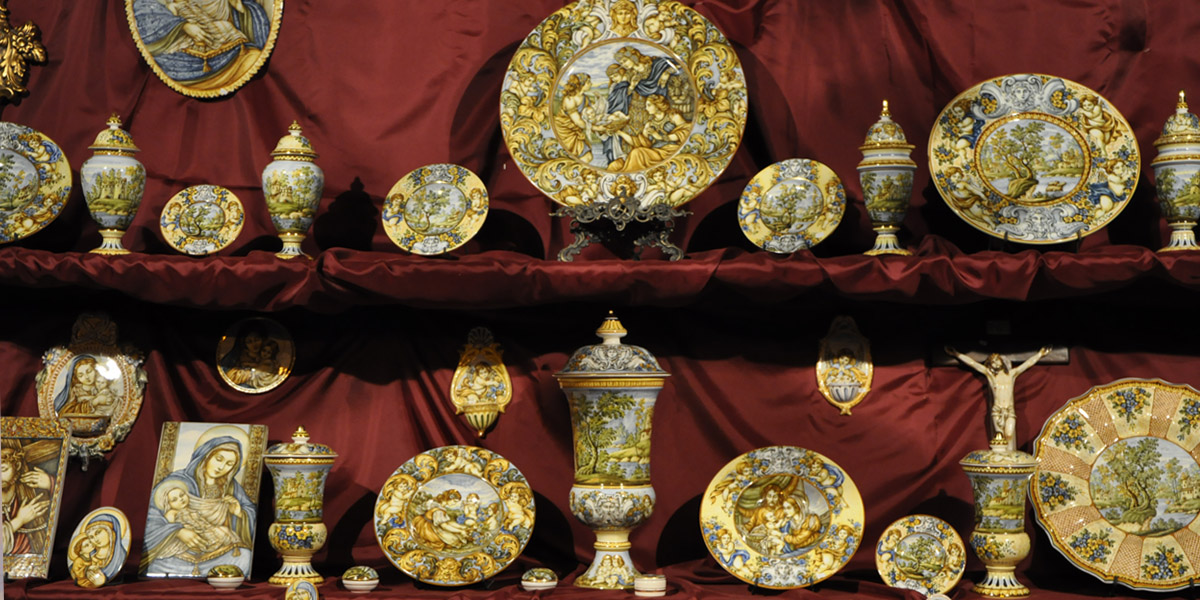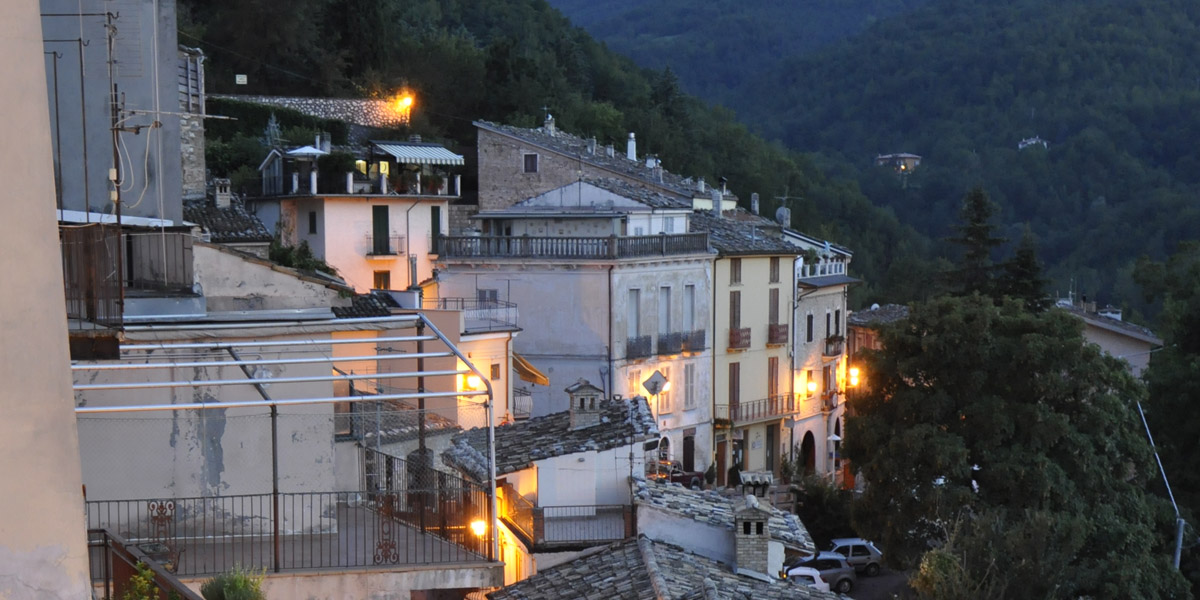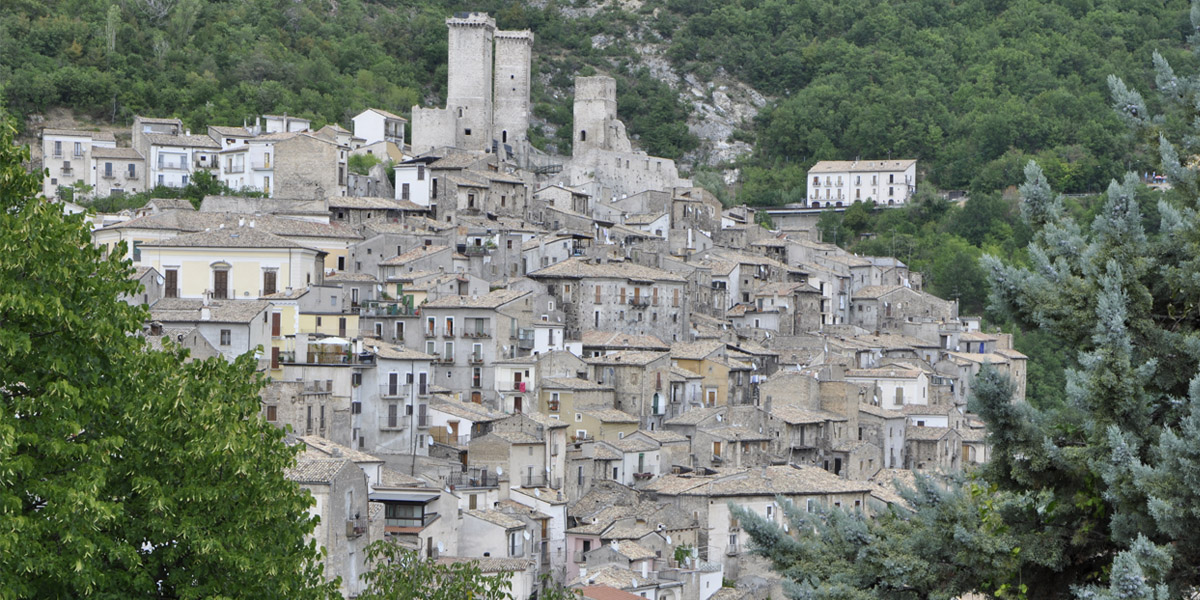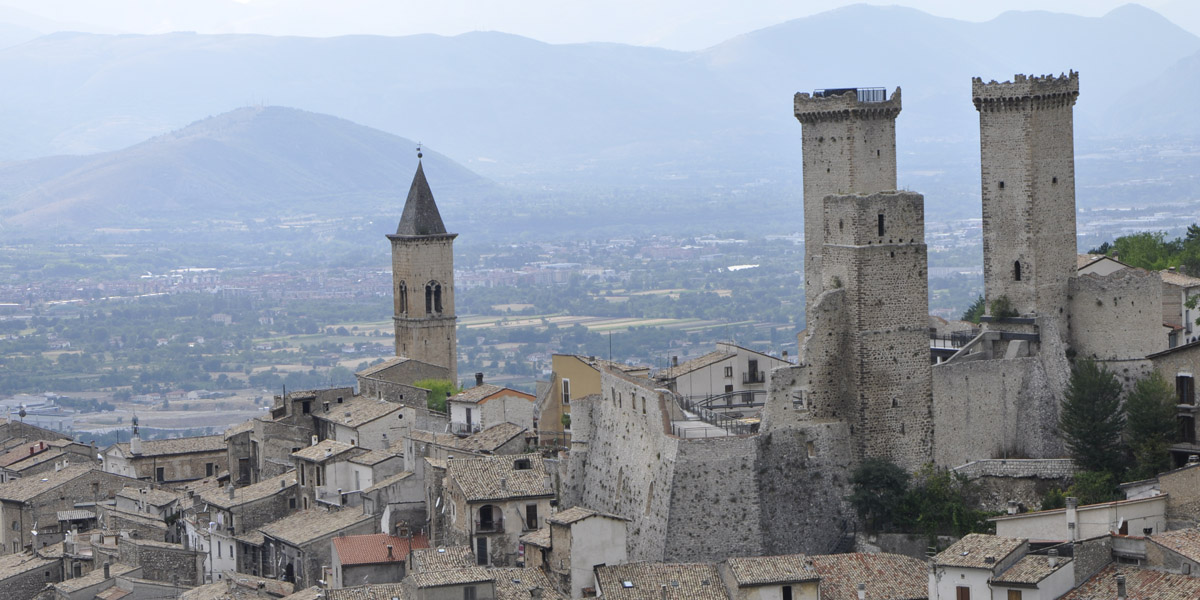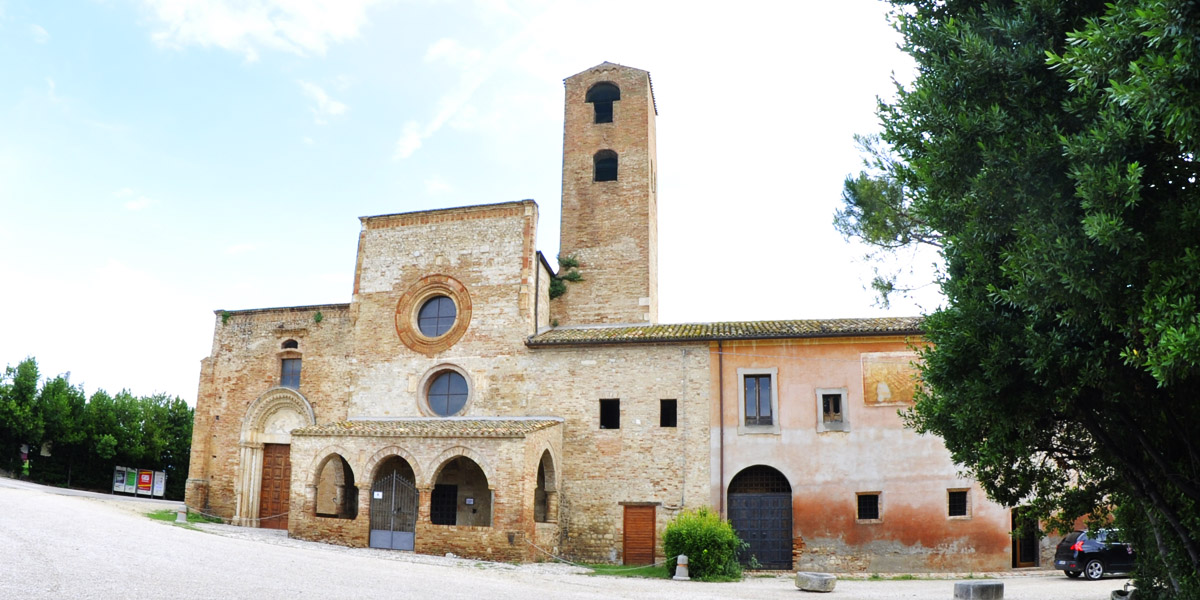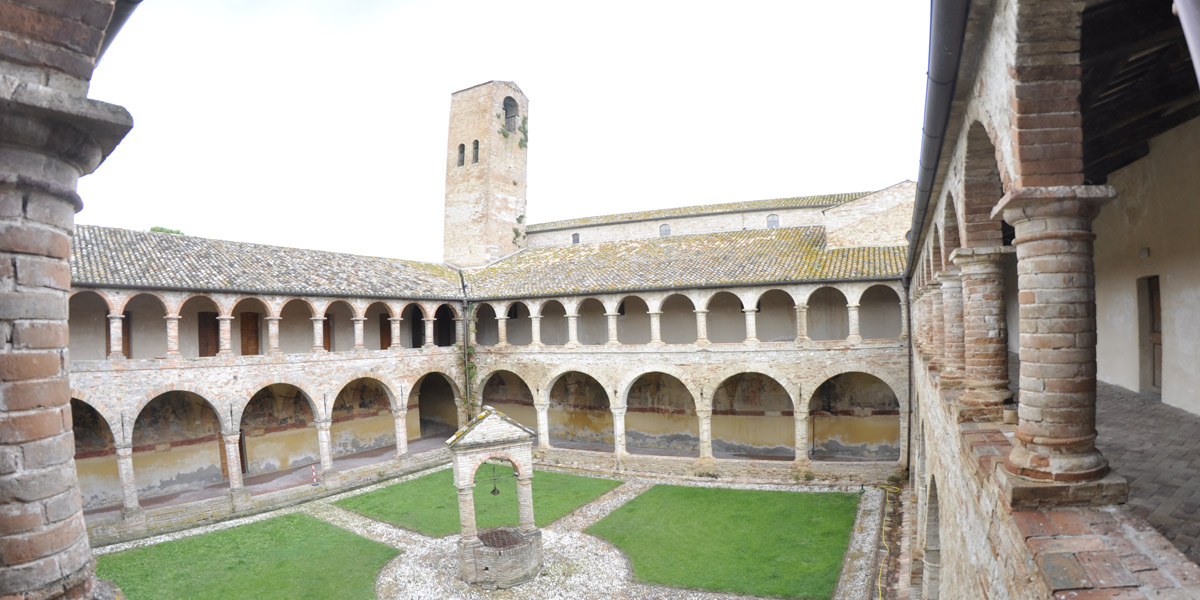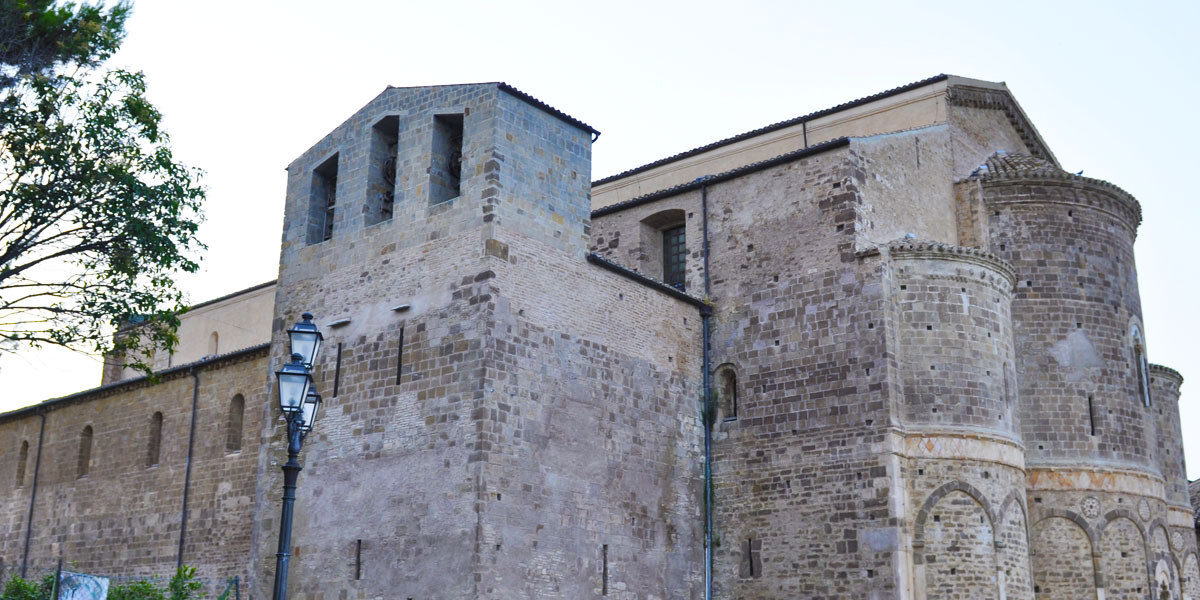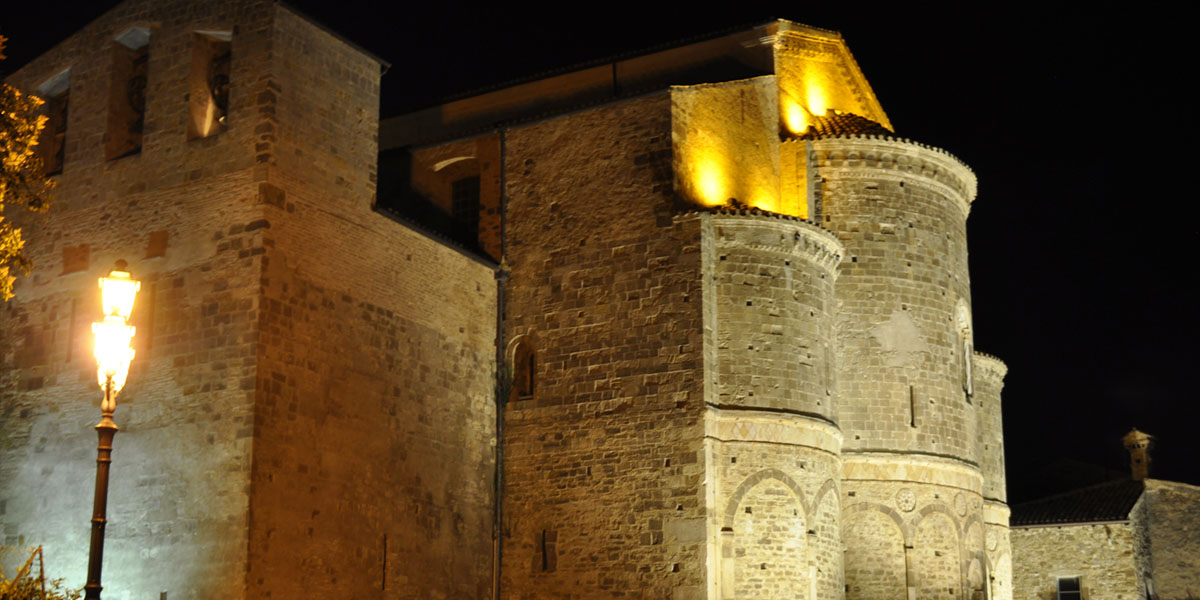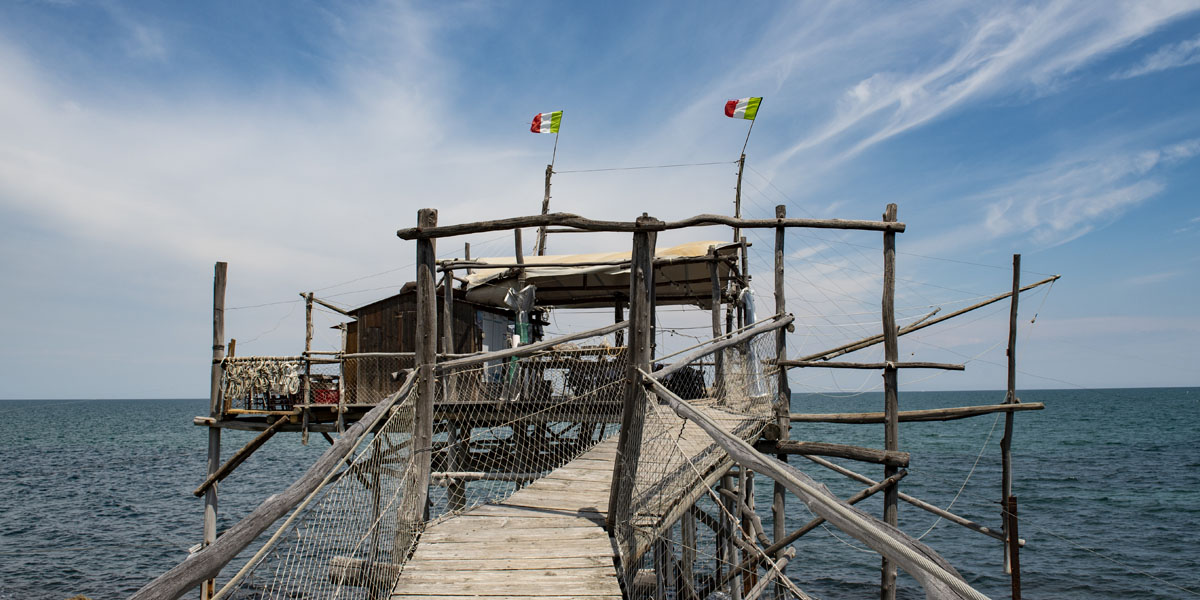Villages
Castelli (TE)
Castelli is the starting point for climbing the Gran Sasso and is known for the production of painted majolica, an art that began with the Benedictine monks. The main street of the town converges towards the central square, overlooked by the Municipality and the Parish of San Giovanni Battista with its monumental white stone staircase and two imposing columns. From here, among narrow and winding streets, the tour can begin to discover this place immersed in nature.
Pacentro (AQ)
Located at the foot of Mount Morrone in the Majella National Park, Pacentro is the gateway to the Peligna Valley, dominated by nearby Sulmona. The towers of the Caldora Castle serves as distinctive symbols of this country and provide breathtaking sunset views over the entire valley. Pacentro is renowned for its squares, fountains and churches that provide pristinely preserved examples of medieval architecture.
Civitella del Tronto (TE)
Civitella del Tronto is a small town in the province of Teramo. The remains of its magnificent Spanish fortress standing on the city’s highest point symbolize the last stronghold of the Bourbon Kingdom and the Kingdom of the Two Sicilies who fought to resist the unificiation of Italy. Narrow picturesque streets, richly appointed churches and a unique network of caves make Civitella a must-see destination. Don’t miss the tour of the Fortress of Civitella del Tronto.
Churches
Abbazia di Santa Maria di Propezzano (TE)
Nestled in Morro d’Oro’s Vomano Valley, the Church of Santa Maria di Propezzano is one of the Abruzzo region’s romanesque centers of Catholic worship. Together with the adjacent monastery the abbey originally belonged to the order of Benedictine and was developed around the same time as nearby abbeys such as San Salvatore di Canzano and San Clemente al Vomano. The name “Propezzano” seems to be etymologically linked to that of the Madonna Propiziatrice to the poor, to whom the church is titled. In 1902 it was included in the list of Italian national monuments. The Abbey is part of the religious tourist itinerary of the Abbeys Valley.
Nestled in Morro d’Oro’s Vomano Valley, the Church of Santa Maria di Propezzano is one of the Abruzzo region’s romanesque centers of Catholic worship. Together with the adjacent monastery the abbey originally belonged to the order of Benedictine and was developed around the same time as nearby abbeys such as San Salvatore di Canzano and San Clemente al Vomano. The name “Propezzano” seems to be etymologically linked to that of the Madonna Propiziatrice to the poor, to whom the church is titled. In 1902 it was included in the list of Italian national monuments. The Abbey is part of the religious tourist itinerary of the Abbeys Valley.
Abbazia di San Giovanni in Venere (CH)
The Abbey of San Giovanni in Venere is located in the municipality of Fossacesia, on a hill overlooking the Adriatic Sea at 107 mt. s.l.m. The monastic complex of San Giovanni in Venere is composed of a basilica and a nearby monastery, both built at the beginning of the 13th century to replace a smaller pre-existing monastery. This scenic location is poised on a hill overlooking the several kilometers of the Adriatic Coast to the north and south. Since December 2014, the site has been managed by the Abruzzo Museum Complex.
Santuario di San Gabriele dell'Addolorata
Gabriele of the Addolorata, known as Francesco Possenti (Assisi, 1 March 1838 – Island of Gran Sasso of Italy, 27 February 1862), was an Italian adherent of the Congregation of the Passion of Jesus Christ. Granted sainthood in 1920 by Pope Benedict XV, his liturgical memory is celebrated on February 27th. He is the patron saint of the Abruzzo region, of the Italian Catholic Youth, of the municipality of Martinsicuro, of the city of Civitanova Marche and of the Municipality of Bovolenta (Padua).
Trabocchi
The trabucco or trabocco (in the Abruzzo and Molise variations also called trabocco, libra or travocco) is an ancient fishing machine typical of the Gargano, Molise and Abruzzo coasts. It is protected as a monument from the Gargano National Park and is widespread in the lower Adriatic until some places on the northern coast of the province of Bari. They are so widespread along the Chieti coast from which they originate that the seaside area extending from Ortona to Vasto is called the Trabocchi Coast.
Gastronomy
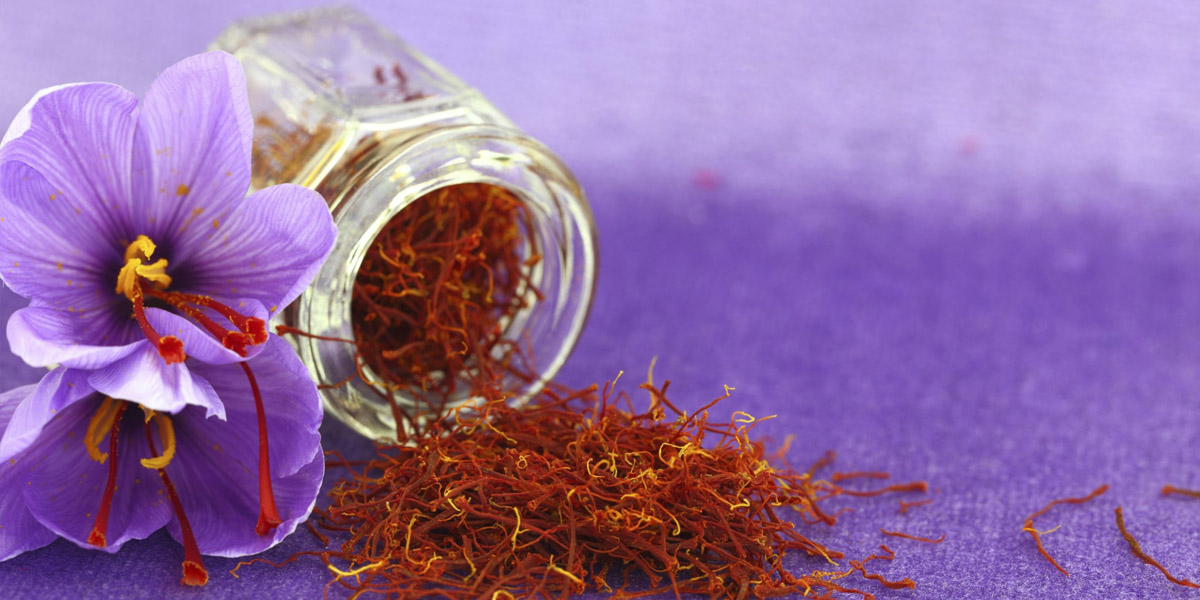
Saffron
The saffron from L’ Aquila is an Italian product with a protected designation of origin, and can only be produced in the province of L’Aquila and in particular on the Navelli Plateau. This area, surrounded by greenery, is dotted with characteristic villages and is crossed by the Sirente-Velino Regional Park. It is bounded, to the north by the Gran Sasso and Laga Mountains National Parks and to the south by the Maiella National Park.
Sugared almond
The sugared almond is a specialty confection typical of the city of Sulmona (Sulmo mihi patria est, said the Latin poet Ovid) in the province of L’ Aquila. The confetto has an ancient history; its manufacture, understood as modern, dates back to the fifteenth century. In addition to almonds produced in the Peligna Valley and in Abruzzo, renowned Sicilian almond varieties like Pizzuta di Avola and Ragusa are also used in he making of these candies. The Ministry of Agricultural, Food and Forestry Policies has included the sugared almond produced in Sulmona in the list of Italian traditional Agri-food Products, recognizing it with the P.A.T.
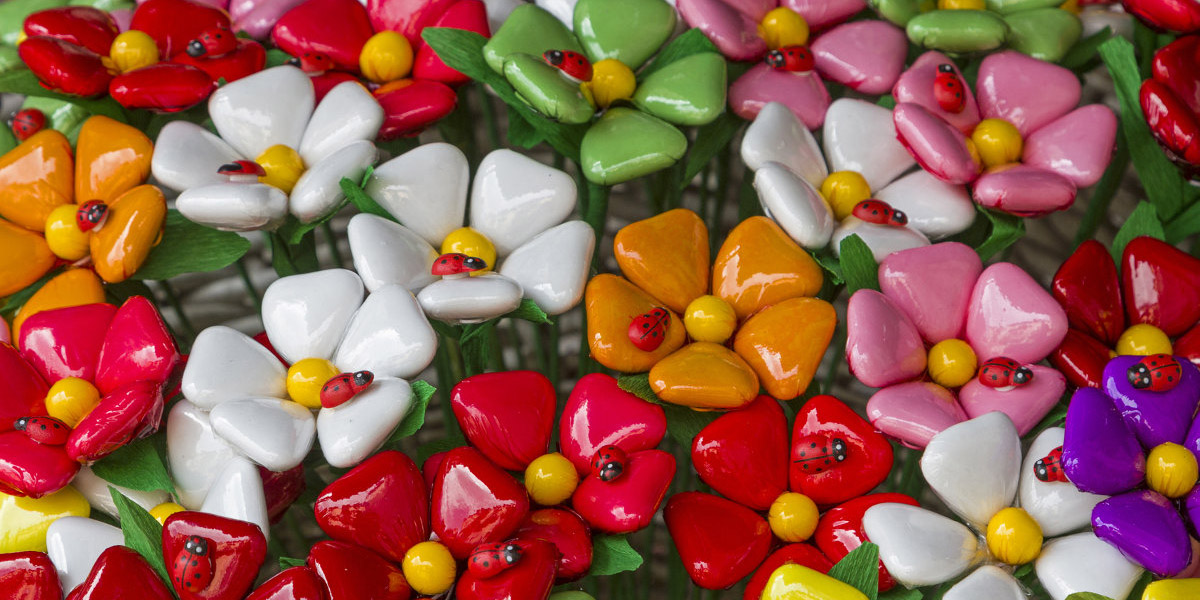

Arrosticini
Arrosticini are typcial Apennine mutton skewers and a staple of Abruzzo’s traditional pastoral cuisine. Legend has it that they were invented in the 1930s by two Voltigno shepherds who cut old sheep’s meat, difficult to eat, into small pieces so as not to waste meat. The small pieces of meat would have become skewers using a wooden stick of “vingh”, a plant that grows spontaneously along the banks of the Pescara river, and then be cooked on the grill. Arrosticini are also consumed outside of Abruzzo and more and more consumers appreciate the extraordinary goodness of this product of the Abruzzo tradition.


